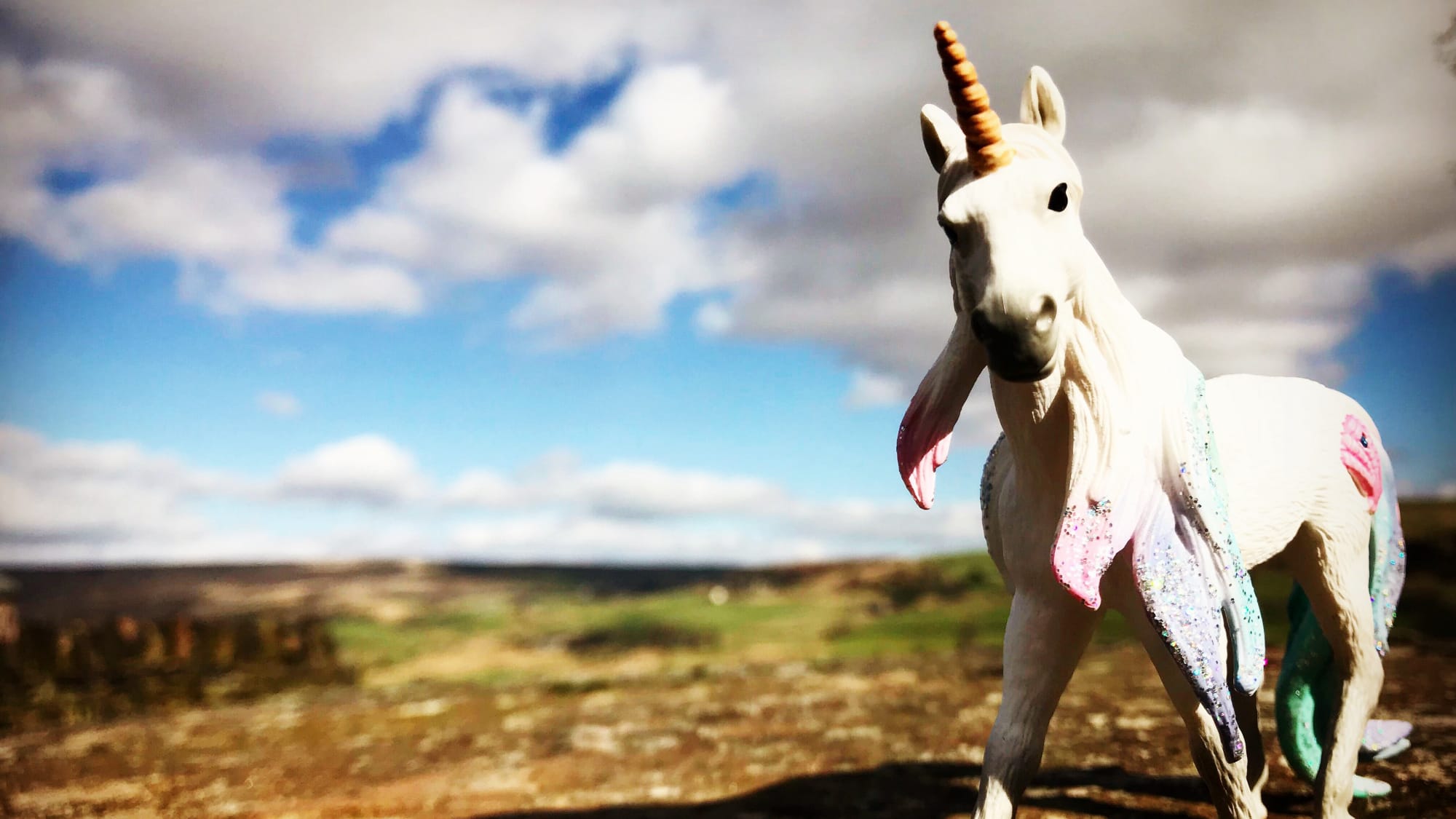A long time ago, in the very-olden-days, unicorns were a lot more commonplace than they are today. In fact, there were so many of them about that they were actually considered a bit of a pest due to the amount of distraction they provided to the children of the very-olden-days.
All too often the children, who should have been paying attention to their lessons or doing their jobs that their parents had asked them to do for the one-millionth-time, would be found asking the unicorns to do their favourite magic trick. And that didn’t always go down well with the parents.
In those days, looking for a unicorn would have been no challenge whatsoever. It would have been just as easy as walking down to your local pond and spotting a goose is today.
Once-upon-a-time it seems that the world was just a little bit more magical than it is today, and unicorns were much easier to find in those days.
Where do unicorns come from?
There’s quite a lot of debate amongst Professors of Magic and Mythology as to where unicorns originally came from. In truth, it’s more than likely that we will never know the true answer.
Some popular theories suggest that the unicorn is simply a distant relative of the horse; although I would challenge anyone who had compared the two animals closely to truly assert this theory. For one thing, there is simply no sparkle about a horse. This fact alone proves that can be no link whatsoever between the two creatures.
My own theory, whilst impossible to prove, feels much more satisfactory. I speculate that unicorns didn’t really come from anywhere in particular, but that they actually originated from a collective wish that also created magic itself.
It took a huge, concentrated burst of energy to create magic; much like when the Earth was first formed. I believe that the energy of millions of children (happy children, sad children, creative children and lonely children), all the children of the world wishing for something special at the same time created magic. And with magic they also created unicorns, fairies, pixies and all the other magical things that we see all around us today.
Of course, I can’t prove that, but it seems the most logical explanation to me.
Unicorn mythology
Unicorns have been part of mythology since the earliest of times, appearing in accounts from the Ancient Greeks, as well as being described in both medieval and Renaissance times.
What I have learned from my study of these myths and legends is the startling difference in the ways in which unicorns are depicted. Sometimes described as being an extremely timid woodland creature; sometime like a white horse with a multi-coloured horn and other times more like a goat with cloven feed and a beard.
This seems to prove some of the powers of the unicorn as we understand them today; in particular their spectacular ability to disguise themselves as just about anything.
But we’ll come back to that later.
Unicorn magic
It might surprise you to learn that unicorns are still fairly common in the UK. It’s true that their numbers have dwindled slightly since the very-olden-days, but it’s still highly likely that you will have crossed the path of a unicorn at some point during your life; even if you didn’t realise it at the time.
Rather ironically, unicorn magic is the reason why there are not quite so many unicorns around as there used to be. It can also explain why we don’t see them out in the open like we used to once-upon-a-time.
As you will already be aware, unicorns are very magical creatures and can perform a whole range of magic tricks. Some of these tricks can be very useful, but on the whole a unicorn will much prefer to do magic tricks that entertain people - especially children.
Unfortunately, this is where the problems first began.
Where have all the unicorns gone?
Life for children of the very-olden-days could sometimes be very dull. Once they had finished school and their jobs, there wasn’t really very much for them to do, especially if their friends weren’t around or if it was raining, for example. If you were a child in these days and you were feeling a little bit bored or lonely, it was common practice for them to go out and find their local unicorn who would be more than happy to perform their favourite tricks to cheer them up and keep them entertained for a bit.
You might think that the adults would think that this was a very good idea, and would thank the unicorns for keeping their small children entertained and out-from-under-their-feet. But the problem was that unicorn magic tricks are very special and can only be seen by children (and sometimes the occasional adult who is still a kid at heart).
So this is how the problems started. The unicorn tricks became so popular with the little children, they would sneak out of their houses at all hours just so that they could see some of their favourite magic. As you can imagine, this made the grown-ups quite cross and they started to get fed-up of all the strange stories their children were telling them about unicorns shooting rainbow stars out of their horns, or making them float on strawberry coloured clouds.
In the end the unicorns realised that they were causing problems for the children and so they started to disguise themselves more often so that they couldn’t find them so easily. Then they retreated further and further into the forests, until eventually the children began to forget that there was ever such a thing as their local unicorn.
And that is why it’s very unlikely that you’ll see a unicorn just wandering around your local forest.
